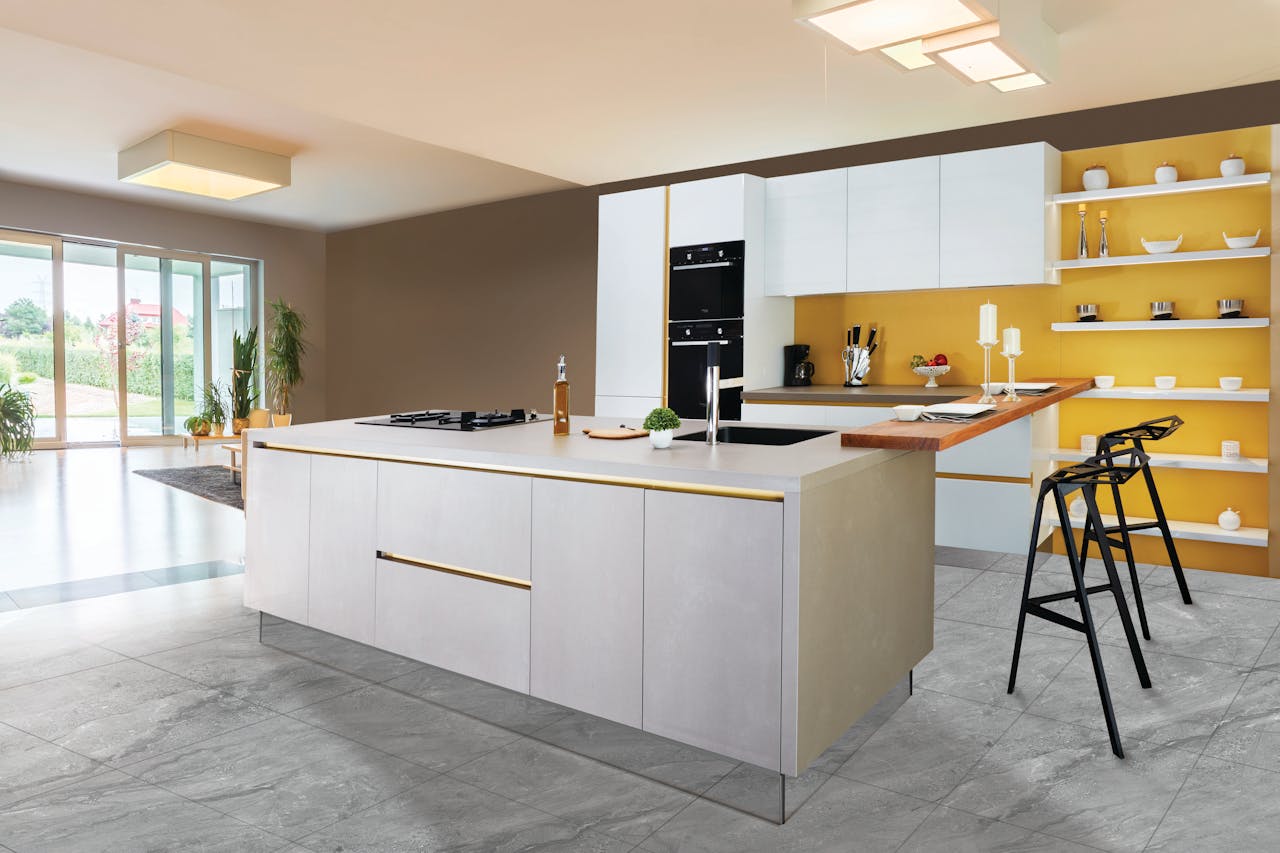Creating an enticing ambiance in your dining room can transform everyday meals into memorable experiences. In the UK, utilising certain lighting techniques can achieve this desired effect. Lighting is an integral aspect of interior design, influencing the atmosphere, mood, and functionality of a room. This article will explore the various lighting techniques that can enhance the ambiance of your UK dining room, promising to help you create an inviting and enjoyable space for all your dining experiences.
Layering Light
Let’s start with the basics: layering light. This technique involves using a combination of different light sources at different levels to create a balanced and flexible lighting scheme. Layered lighting typically involves three components: ambient, task, and accent lighting.
A voir aussi : Lustria luminary : your go-to for designer lighting solutions
Ambient lighting is the base layer that provides overall illumination to the room, often achieved through fixtures such as chandeliers or pendant lights. Task lighting is focused, utilised to aid specific tasks like reading or cooking. Under-cabinet lights, table lamps, or track lights are examples of task lighting. Lastly, accent lighting highlights specific features in the room, such as artwork or architectural details, often achieved through fixtures like wall sconces or spotlights.
By utilising these three layers of light, you can manipulate the ambiance of the room to suit any occasion or mood.
Dans le meme genre : What are the innovative ways to use under-stairs space in a UK home?
The Power of Dimmers
The role of dimmers in enhancing the ambiance of a dining room cannot be underestimated. Dimmers allow you to adjust the brightness level of your light fixtures, enabling you to transition from a bright, vibrant space during meal preparation to a cosy, intimate setting for dining.
This is particularly beneficial in open-plan homes, where the dining area is part of a larger room. With dimmers, you can create a unique atmosphere in the dining area, separating it from the surrounding spaces. Remember, the key to successful dimming is to ensure your light bulbs are dimmable and compatible with your dimmer switch.
Choosing The Right Colour Temperature
The colour temperature of your light bulbs can significantly impact the ambiance of your dining room. Colour temperature is measured in Kelvin (K), with lower temperatures producing a warm, yellowish light, and higher temperatures resulting in a cool, bluish light.
In a dining room, a warm colour temperature of around 2000K-3000K is generally recommended. This creates a cosy, inviting atmosphere, ideal for relaxed dining. For a more modern, minimalist dining room, a neutral white light of around 4000K may be more suitable, creating a bright, energetic vibe.
Strategic Placement of Light
The placement of your light fixtures plays a crucial role in shaping the ambiance of your dining room. Central lighting, such as a chandelier or pendant light over the dining table, creates a focal point and illuminates the space where light is most needed.
However, don’t overlook the potential of other areas of the room. Lighting in a display cabinet or buffet can highlight your favourite china or glassware. Wall sconces can draw attention to artwork or architectural features. A floor lamp in a dark corner can add depth and interest to the room.
Incorporating Natural Light
Finally, don’t forget about the power of natural light. In the UK, where the quality and quantity of natural light can vary greatly depending on the time of year, taking advantage of this resource is essential.
During the day, large windows, skylights, or glass doors can flood the dining room with sunlight, creating a bright, cheerful ambiance. For evening dining, the warm glow of a sunset or the soft light of a cloudy day can add a unique, atmospheric touch to your dining room.
By using the right window treatments, such as curtains, blinds, or shades, you can control the amount of natural light entering the room, allowing you to adjust the ambiance as needed.
As you can see, there are various lighting techniques to consider when aiming to enhance the ambiance of your UK dining room. Remember, the key is to find a balance between functionality and aesthetics, creating a lighting scheme that not only serves your needs but also captures the mood and atmosphere you desire.
Combining Artificial and Natural Light
One of the most effective ways to create a warm and welcoming dining room ambiance is by harmoniously combining artificial and natural light. This combination allows you to create a dynamic, flexible lighting scheme that adapts to different times of day and seasons.
Artificial light, as we discussed earlier, can be layered to create depth and interest in the room. Use ambient lighting to set the overall tone of the room, task lighting for specific functions, and accent lighting to highlight features. Remember, your choice of light bulbs and their colour temperature can significantly affect the mood of the room.
On the other hand, natural light brings a unique, ever-changing element to your dining room. In the UK, you can witness various light conditions throughout the day, from the crisp morning light to the golden hues of sunset. By incorporating large windows or glass doors, you can take full advantage of these natural light variations.
Additionally, window treatments can help you control the intensity and direction of natural light entering the room. You might opt for light, sheer curtains for a soft, diffused light, or choose blinds or shutters for more control over the light levels.
In combining artificial and natural light, you can create a beautifully lit dining room that can transition from a bright, energising space during the day to a cosy, intimate setting in the evening.
Adjusting Lighting for Different Occasions
Your UK dining room is a versatile space, hosting a variety of activities ranging from daily meals to special occasions. Therefore, your lighting scheme should be just as adaptable, providing the appropriate ambiance for any event.
On a typical weekday, you may want your dining room to be bright and functional for quick breakfasts or after-school homework sessions. For this, a combination of natural light and bright, cool-toned artificial light would be appropriate.
On the other hand, for dinner parties or special celebrations, you might desire a more intimate, atmospheric setting. Dimmers can help you achieve this mood, allowing you to lower the overall lighting level for a more subdued ambiance. Additionally, consider using candles or fairy lights for a soft, warm glow that fosters a sense of festivity and warmth.
Remember, the key to a versatile lighting scheme is flexibility. By considering the different uses of your dining room and adjusting your lighting accordingly, you can ensure the space is always inviting and comfortable for any occasion.
Conclusion
In conclusion, enhancing the ambiance of your UK dining room is a delicate balancing act that requires thoughtful planning and careful selection of light fixtures and sources. From layering light and adjusting colour temperatures to strategically placing light fixtures and harnessing natural light, there are numerous techniques at your disposal.
Whether you prefer a traditional, cosy atmosphere or a modern, vibrant vibe, the right lighting can significantly impact the overall ambiance of your dining room. Remember, the goal isn’t just about creating a visually stunning space; it’s about creating an environment that feels welcoming and comfortable, enhancing the dining experience for you and your guests.
By following the guidance outlined in this article, you will be well on your way to creating a beautifully lit dining room that reflects your personal style and serves your needs. Here’s to many memorable meals in your brilliantly lit dining space.






